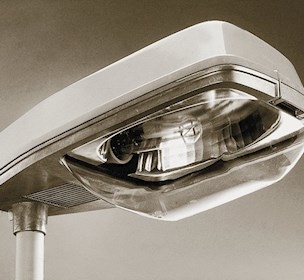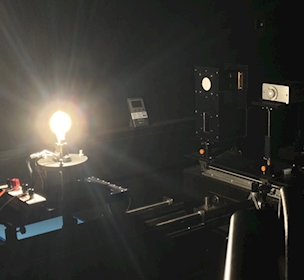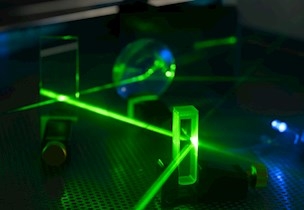What is photobiological safety, and why is it important?
Products with light sources that do not comply with photobiological safety standards can cause serious harm to users.
As a manufacturer, it is essential to know that all products containing light sources (excluding lasers) must be tested and classified for risk according to the EN 62471:2008 standard on photobiological safety before they can be marketed and sold.
What is photobiological safety?
Light sources emit optical radiation, which can be hazardous to both eyes and skin, potentially causing burns or inducing photochemical damage to the retina during prolonged exposure.
Therefore, manufacturers must document that their products are safe for use, ensuring photobiological safety.
Photobiological safety primarily concerns potential risks from visible light, infrared (IR) light, and UV radiation.
The type of light determines photobiological safety
Products can contain various light sources, including visible light, IR, and UV. These types of light have different risks, and in all cases, the more intense the radiation, the shorter the exposure time should be:
- Blue light
Blue light from powerful sources like LED chips can be particularly harmful to the eyes (Blue-Light Hazard), potentially causing photochemical reactions and retinal damage. This requires careful risk assessment.
- Infrared light (IR)
Known for emitting thermal energy, IR light is used in applications such as surveillance cameras, tracking systems, signal transmission, and communication systems, and can cause eye damage with prolonged exposure. A significant risk of IR light is that it does not trigger the eye's natural protective mechanisms since it is invisible and does not elicit a visual response.
-
Ultraviolet light (UV)
Used in industries such as pharmaceuticals, biotechnology, and food production, as well as in the entertainment sector. UV-A and UV-B are commonly used in medical and commercial applications such as plant growth, disinfection, material testing, and tanning beds, while UV-C is potent for microbial control and sterilisation in healthcare and food sectors. UV radiation is dangerous for both skin and eyes, thus necessitating dosage limits.
Why is accredited testing for photobiological safety important?
Before marketing and selling products with light sources, manufacturers must assess photobiological risk through testing according to EN 62471:2008.
An accredited test report from a recognised third party allows manufacturers to obtain CE marking, required for selling products in Europe. An accredited report ensures testing is conducted in an accredited laboratory with the necessary expertise and quality control, making the results reliable and globally recognised.
Photobiological safety risk groups
Light sources are classified into risk groups based on their potential to cause photobiological harm:
- RG0 (Risk Group 0 - Exempt): No risk under normal use, can be used without restrictions.
- RG1 (Risk Group 1 - Low risk): Very low risk of harm, safe under most conditions.
- RG2 (Risk Group 2 - Moderate risk): Can cause harm with prolonged exposure, natural defence mechanisms typically provide sufficient protection.
- RG3 (Risk Group 3 - High risk): High risk of acute harm, even with short exposure; requires strict precautions.
Which products must comply with photobiological safety requirements?
Therefore, a wide range of products must be evaluated for photobiological safety, including:
- LED lamps and bulbs
- Lighting chains
- Floodlighting
- Stage lighting
- Handlamps
- Ground-recessed luminaires
- Emergency lighting
- Aquarium luminaires
- Non-laser optical medical equipment
- Light therapy lamps
- UV sterilisers and cleaners
- UV lamps in nightclubs.
Products must be labelled with a warning label according to their classification if not classified as exempt (RG-0).
Why is photobiological safety important?
Photobiological safety is crucial to prevent the harmful effects of radiation from light sources. Without adequate safety measures, users could be exposed to harmful radiation, resulting in serious health issues.
Manufacturers should conduct early testing to evaluate photobiological risk, avoiding costly redesigns of products found to be unsafe for their intended applications.
What damage can occur if the product is not correctly classified for photobiological safety?
Several potential harms can arise from inadequate photobiological evaluation and increased exposure to light:
- Eye damage: Overexposure to UV radiation can cause photokeratitis (snow blindness) and increase the risk of cataracts. Blue light can also damage the retina and contribute to macular degeneration.
- Skin damage: UV radiation can cause sunburn, premature skin ageing, and increase the risk of skin cancer.
Please do not hesitate to contact us if you need further information on photobiological safety or if you need accredited testing of your products with light sources.
Related content

Accredited test of photobiological safety
/Service
Requirements for documenting photobiological safety of products with visible light, IR, and UV.

Accredited tests of retroreflective materials
/Service
Verify compliance of retroreflective materials and sheeting according to relevant standards.

Accredited light measurement of light sources
/Service
Get tested and verified if your light sources and lighting systems meet requirements and standards.


